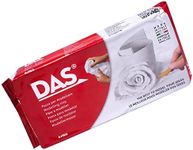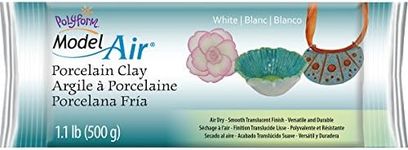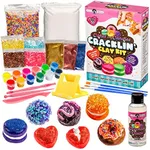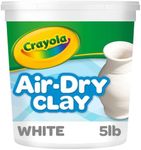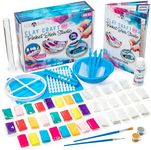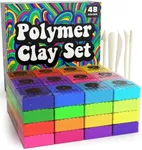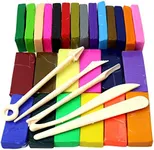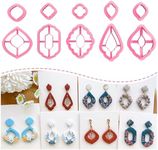Buying Guide for the Best Air Dry Clay
Choosing the right air-dry clay can be a fun and rewarding experience, especially if you know what to look for. Air-dry clay is a versatile material used for crafting, sculpting, and even some functional items. It doesn't require a kiln or oven to harden, making it accessible for beginners and experienced crafters alike. When selecting air-dry clay, consider the following key specifications to ensure you pick the best product for your needs.TextureTexture refers to how smooth or coarse the clay feels. This is important because it affects the ease of molding and the final appearance of your project. Smooth-textured clays are easier to work with for detailed projects and are ideal for beginners. Coarser clays may be better for larger, more robust sculptures. Consider what type of project you are working on and choose a texture that will be easy to manipulate and achieve the desired finish.
Drying TimeDrying time is the amount of time it takes for the clay to harden completely. This is crucial because it affects how long you have to work on your project and how soon you can finish it. Clays with shorter drying times (24-48 hours) are great for quick projects or if you need to complete something on a deadline. Clays with longer drying times (up to a week) allow for more detailed work and adjustments. Choose a drying time that fits your project timeline and working style.
FlexibilityFlexibility refers to how pliable the clay is when wet and how much it can bend without cracking once dry. This is important for projects that require bending or shaping after the clay has started to dry. Highly flexible clays are ideal for intricate designs and detailed work, while less flexible clays are better for solid, sturdy structures. Think about the complexity of your project and whether you need a clay that can handle fine details or one that will hold its shape well.
ShrinkageShrinkage is the amount the clay reduces in size as it dries. This is important because it can affect the final dimensions of your project. Low-shrinkage clays are ideal for projects where precise dimensions are important, such as fitting pieces together. Higher shrinkage clays may be suitable for more artistic, freeform projects where exact size is less critical. Consider how important the final size of your project is and choose a clay with appropriate shrinkage characteristics.
ColorColor refers to the natural color of the clay and whether it can be painted or dyed. This is important for the aesthetic of your final project. Some clays come in a variety of colors, while others are white or gray and can be painted after drying. If you want a specific color for your project, look for clays that either come in that color or can be easily painted. Think about the final look you want to achieve and choose a clay that will help you get there.
DurabilityDurability refers to how strong and long-lasting the clay is once it has dried. This is important for projects that will be handled frequently or need to withstand some wear and tear. More durable clays are ideal for functional items or pieces that will be moved around a lot. Less durable clays may be suitable for decorative items that will remain stationary. Consider how your finished project will be used and choose a clay that will hold up to those conditions.

